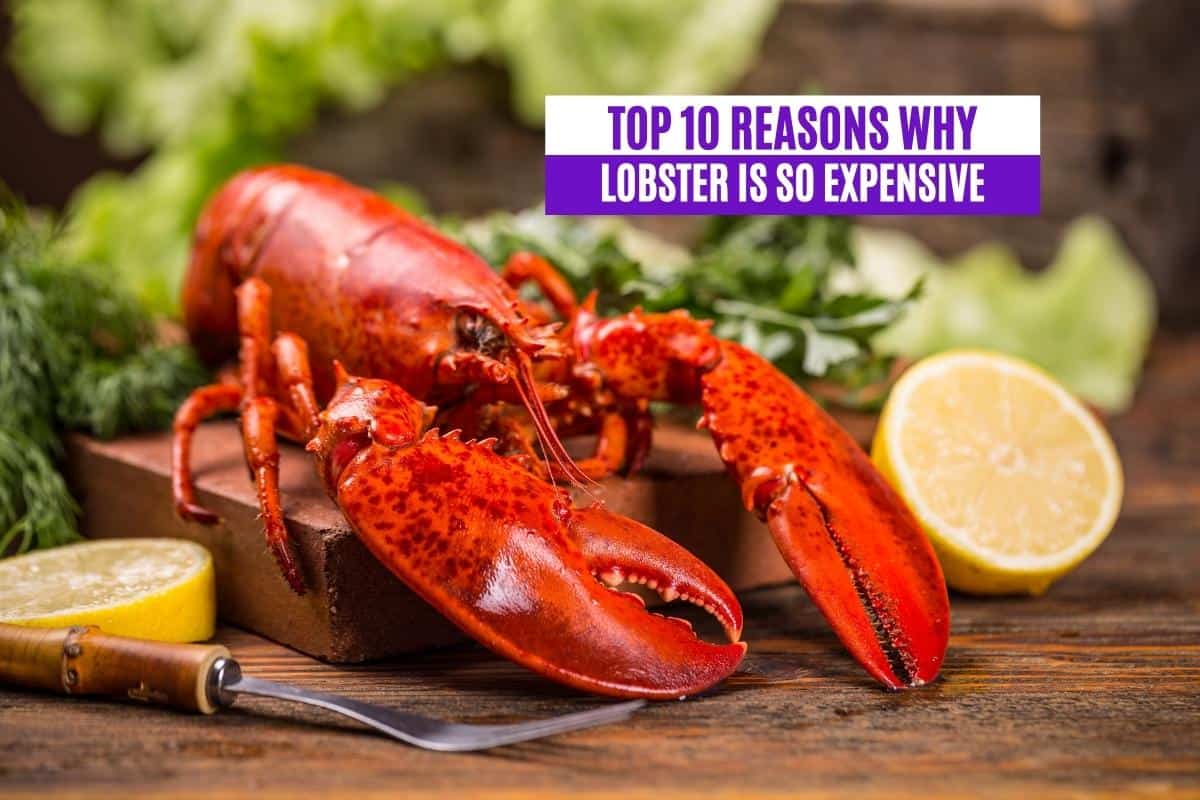The world’s most expensive lobster dish — how much do you think it costs?
$300? Maybe $500?
Not even close.
At Norma’s in Le Parker Meridien Hotel, New York City, you can order the world’s most expensive lobster dish for a whopping $2000.
That price is mostly attributed to its 10 ounces of caviar. Nonetheless, there’s no doubt that lobster just sings ‘luxury.’
A customer may order mac’ n’ cheese as a cheap side dish. But add lobster? Now you’ve got lobster mac ‘n’ cheese — a luxurious meal.
What makes this one crustacean cost so much more than any of its ocean-dwelling counterparts? After all, no-one jazzes up their mac ‘n’ cheese with crab. Why does lobster sound so much more luxurious than other shellfish?
Lobster may be difficult to catch, farm, and transport, but reason number 1 will surprise you!
Not Always Luxury Seafood!
Go back 200 years, and lobster didn’t hold the lavish label it does now. In the past, lobster washed up on some American shores in such abundance that it was considered a poor man’s food.
How did its image reverse so drastically?
The 180 in price and perception is mostly attributed to rebranding the product inland and abroad. Piles of washed-up lobster growing smelly on the beach may have put off coastal consumers, but to customers inland, lobster didn’t have those negative connotations.
Canned in supermarkets and added to expensive train-car meals, lobster’s reputation started to grow. Then, in World War Two, lobster wasn’t a rationed item. So it was an excellent way to legally get a little more protein in your weekly diet.
The masses grew a liking to the clawed creatures, and haven’t looked back since.
Why Is Lobster So Expensive Now?
In the face of demand, a product’s price will always increase. But lobster faced a second issue: overharvesting.
Fisheries quickly caught on to the demand and decimated lobster populations. While their population is stable, lobsters can’t be harvested at the rates they once were, and they certainly aren’t washing up on American shores in abundance.
The real issues, though, are the necessary methods and logistics of catching and transporting lobsters in the modern age. These have shot prices up even more:
Top 10 Reasons Why Lobster Is So Expensive
- The price is part of the image
- Some lobsters die in transit
- Shipping lobster is expensive
- Lobsters have to be eaten uber-fresh
- Lobsters are difficult to farm
- The supply chain is longer than most
- Lobster isn’t consistent year-round
- Many females have to be thrown back
- Lobsters are a low-yield catch
- Catching lobsters is hard work
10. Catching Lobsters Is Hard Work
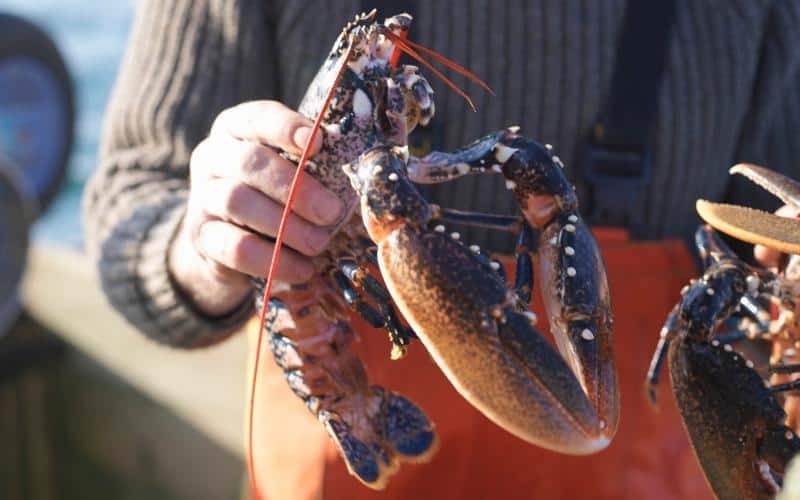
When we picture commercial fishing, perhaps huge oceanliners with gigantic nets being craned on board come to mind.
But that’s not how you catch lobsters.
Lobster fishing involves catching the animals in small traps, often called ‘lobster pots.’ These traps aren’t dragged through the ocean like nets. Instead, they sit on the seafloor, being checked every few days, until hopefully, a few lobsters crawl inside.
The traps also have to be baited by hand. The baiting, dropping, and hauling process takes time and manpower, possibly some of the highest in the fishing industry.
On top of that, new regulations make it even more challenging. Whales can get caught in the nets and traps used, injuring or even killing themselves. These include right whales, which are endangered. So in 2021, laws were passed that further regulate lobster and crab fishing methods. These limitations will reduce fishermens’ yield.
9. Lobsters Are a Low-Yield Catch
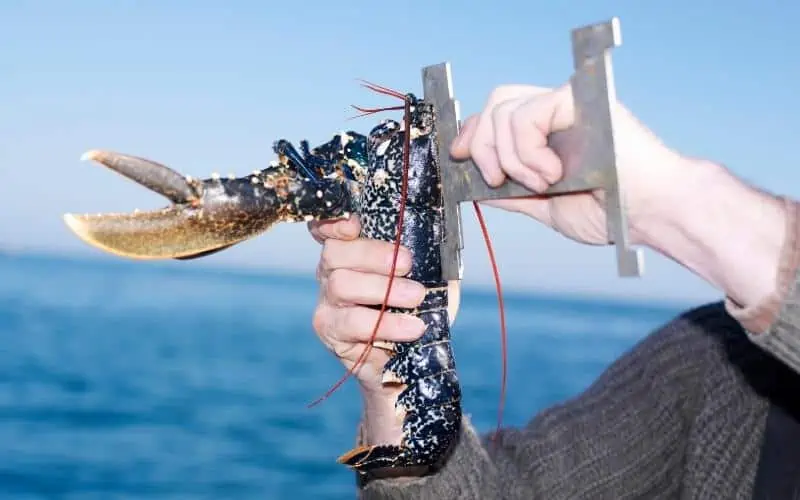
Catching them is hard, but catching enough is even harder.
Lobsters, much like most seafood, have regulations controlling what can and can’t be kept. Even when the lobster traps only have a few specimens, fisherman still can’t keep all of their catch.
If a lobster is too small or too big, it has to be thrown back. Only lobsters with a body shell length of between 3 ¼ and 5 inches can be kept and sold. So if all the lobster a boat catches in one week is too small, that translates to zero dollars for the fishermen.
8. Many Females Have to Be Thrown Back
Even lobsters of the correct size can’t all be kept.
Female lobsters that are carrying eggs have to be thrown back, even if they fit the size criteria for selling. Before they do, fishermen make a mark on the lobster to indicate it produced eggs.
The mark will last for a few years. If later on, another fisherman catches that lobster, it will have to be thrown back even if it’s not currently producing eggs.
These important measures support the lobster population in the long term by allowing egg-producing females to keep populating the ocean. In the short term, though, they result in smaller hauls for fishermen and higher prices for end-of-chain consumers.
7. Lobster Isn’t Consistent Year-Round
While they live in our oceans and can be caught year-round, American lobsters are much easier to catch in season.
Peak harvest season is when crustaceans are most active, typically from summer to the end of the year. They can still be caught in the earlier months, but often in smaller quantities.
After all, if they’re not active, they won’t be wandering in the lobster pots on the seafloor!
To make up for the low hauls in the first half of the year, fishermen have to charge more all year round for the creatures.
6. The Supply Chain Is Longer Than Most
The supply chain for lobster presents more issues than usual.
As with all supply chains, each player has to increase the price to generate a profit margin. In the fishing industry, those steps can be the fishery, the market, then the restaurant. Or the fishery, the processor, then the supermarket.
However, low-yield, high-end products like lobster can attract extra parties. According to the Reef Resilience Network, “for seafood sold into more formal markets, supply chains can consist of any number or combination of mid-chain players (e.g., aggregators, primary processors, traders, wholesalers, dealers, secondary processors, distributors, transporters), who transform, package, and move product from the point of production to the final sale.”
Not only will the price increase through every step of this process, but lobsters require very demanding conditions through transportation (find out more in point 3!), raising the price even further.
5. Lobsters Are Difficult to Farm
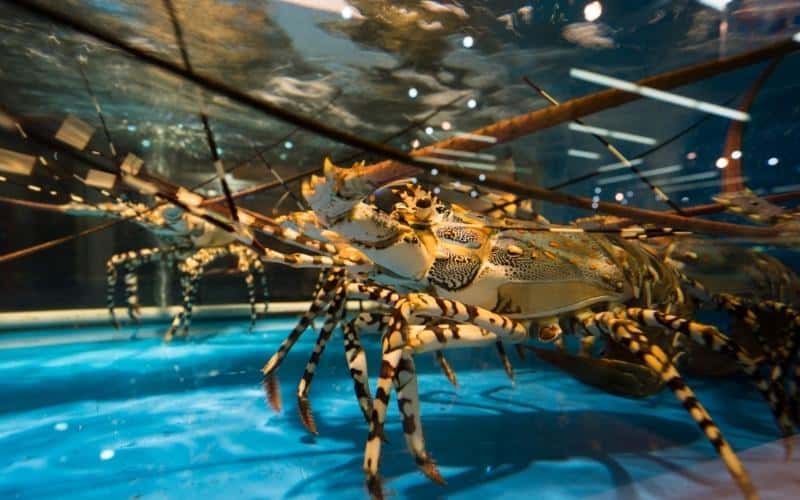
Since catching lobsters is such a low-yield, inconsistent operation, why not farm them? After all, lots of expensive seafood from salmon to shrimp is successfully farmed, and still tastes delicious!
Lobsters aren’t so easy.
First of all, lobsters grow very slowly. The time it takes to develop from an egg into a fully grown, dinner-sized adult can be 7 to 10 years.
Secondly, they are expensive to maintain. Lobsters need a lot of food to grow into a sellable size. Especially considering only a proportionally small amount of meat can be extracted from their shells, it’s a very low return on investment. And if a farmer makes the mistake of underfeeding them, the lobsters may even start eating each other.
More tricky is their survival rates. Lobsters are susceptible to disease, particularly when they’re young. One contagious illness can render the animals unable to eat, and therefore survive!
Sickness aside, in general lobsters have low survival rates. Only 2 out of every 50,000 eggs are ever expected to reach adulthood.
Overall, then, the unreliable seas are the favored method of sourcing lobsters, despite the issues.
4. Lobsters Have to Be Eaten Uber-Fresh
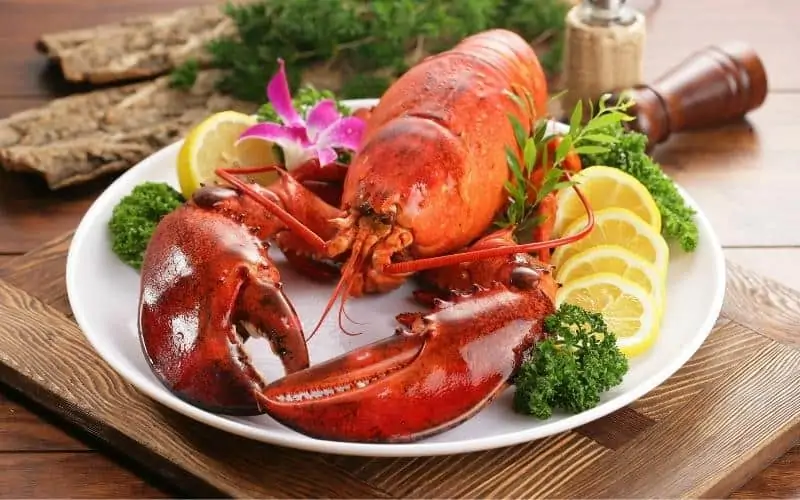
Lobsters have to be eaten incredibly fresh. The longer you wait to cook a lobster, the less pleasant the texture of the flesh becomes. And soon after, bacteria make it inedible.
After a lobster dies, the bacteria that naturally live inside take over the animal. This isn’t your typical bacteria that can be killed with heat. Even after cooking, they will still be present, and leave anyone who tried to eat the lobster very sick.
This process takes place in lobsters within a few hours of them dying!
To combat this unique challenge, lobster-serving establishments often keep the creatures alive in a tank on display in the restaurant. They want the animal to be living until the last second. In fact, some chefs choose to cook lobster live, to minimize the chances that the dish will make you sick.
Is the cost of maintaining a lobster tank within a restaurant the issue then? Not quite. The real challenge is that for lobsters to be eaten fresh, they have to be delivered fresh…
3. Shipping Lobster is Expensive
Since lobsters have to be eaten as fresh as possible, transporting them around the country is an expensive endeavor.
For them to be alive at the restaurant, they have to be alive in transit!
The costs involved in this process are exorbitant. The animals survive best when not kept in tanks for the entire journey, but they have to stay moist. Plus, the humidity, oxygen, and temperature levels are all strictly controlled to maximize the chance of survival.
These substantial shipping costs are then marked up to the restaurants, who have to mark them up further to us hungry customers.
2. Some Lobsters Die in Transit
As if shipping lobsters wasn’t expensive enough, not all of them survive the journey!
Despite meticulous efforts to maintain a controlled environment during transit, not all lobsters make it to their destination intact. Their claws are often kept closed with elastic bands, but this isn’t a foolproof method of keeping them safe from each other. And any lobsters that are too active in the journey can cause the same problems, even with their claws tied.
Transit itself is also never a guarantee. Even in perfect conditions, a lobster won’t live forever inside a truck. Typically, lobsters will only stay alive in transit for a few days. Any delays in shipping, therefore, could result in the costly loss of an entire bulk order.
The lobsters that die in transit in a restaurant or grocer’s bulk order have still been paid for. And those businesses still need to make a profit.
To make up for the loss of the lobsters that couldn’t be sold, their cost is factored into the price of the usable lobsters.
So when you buy one, you might be buying two!
1. The Price is Part of the Image

Us hungry lobster eaters are our own worst enemy.
In part, lobster is expensive because that is what consumers expect.
A 1996 study of restaurateurs and grocers alike concluded that “setting the price too low was as dangerous as setting it too high. A low price creates suspicion.”
Some restaurants even reported setting the price of lobster deliberately high so that other seafood dishes seemed to be a better value, encouraging customers to spend more than they would if the high-end lobster plate wasn’t on the menu for comparison.
A One of a Kind Product
No other shellfish, or any luxury seafood for that matter, struggles with this exact combination of challenges.
It’s not the world’s most expensive seafood — that would be blue-fin tuna. But its manpower-heavy fishing methods, low yields, and complicated transit logistics all accumulate.
Add to that our own perception of lobster’s luxurious nature, and buying a cheap lobster dish becomes impossible.
Perhaps the exclusive, expensive feel lobster has developed is what makes it special. The fact we can’t have it every day makes it quite an occasion when we do.
And lobster isn’t the only fascinatingly pricey food out there. Check out our other expensive food and drink blogs.
Or got an idea for a list you’d like us to research? Get in touch!

